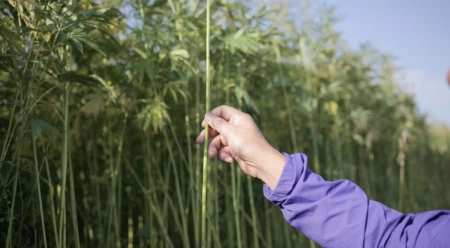Hemp Is Back: How Some of Ours Is Produced, in Photos
It’s hard not to notice the hype around hemp today. Pick up any lifestyle magazine, enter a pharmacy, talk to a health-food store employee or just the person next to you in yoga class—at some point you’ll learn about its miraculous powers. In particular, near-unbelievable claims swirl around cannabidiol, or CBD, oil derived from hemp: It’s an anti-inflammatory, it cures cancer, helps arthritis, depression, anxiety, multiple sclerosis, insomnia and prevents diabetes.
While virtually all of those claims remain vastly under-supported by scientific rigor (a shortcoming that researchers are scrambling to remedy), the buzz points to an important, much bigger development—that hemp is back in the United States after nearly 80 years of criminalization. And the benefits of hemp as a fiber for making clothes are no mere hype.
Since 1937, when hemp was shortsightedly lumped in with its cannabinoid cousin, marijuana, and 1970, when it was designated a schedule 1 banned substance, it’s been felony to cultivate and sell hemp, no matter its use. But the 2018 Farm Bill finally made industrial hemp legal to be broadly cultivated, sold and transferred again across state lines.
We celebrated this news. At Patagonia, we’ve used legally-sourced hemp fiber in our clothing line since 1997, importing it to make clothes by blending hemp with other fibers such as recycled polyester, organic cotton or spandex. Post Farm Bill, we hope soon to have domestic supplies of hemp to draw upon; we’re already talking to a number of farmers about it. There’s potential here to create new American jobs.
For now, Patagonia’s hemp is sourced in China, a country whose government heavily subsidizes hemp production and has for generations. Hemp is simple to grow, and requires less water than most crops. It’s also considered restorative, bringing nutrients and minerals up from deep in the ground with its enormous taproot structure.
Once processed, hemp yields a beautiful linenlike fiber that’s strong, flame retardant and antimicrobial. We find it makes clothes more durable, breathable, and broken-in from the first time you wear them. And we’re excited to learn more about it.
“We haven’t grown hemp for so many years in the United States that the expertise we used to have, all of that historical knowledge, is just gone,” says Patagonia Material Developer Alexandra La Pierre, who heads up the hemp project for the company. “We’re playing catch-up.”
Along with the opportunity to regain this expertise, the 2018 Farm Bill offers us the chance to recover our heritage. From the sails and rigging of the ships that brought early settlers across the Atlantic, to the first American flag putatively sewn by folk heroine Betsy Ross, to the canvas that covered the wagons that eventually rolled inexorably west — hemp played an integral role in the growth of our republic.
Growing hemp is easy enough, but a complicated set of steps takes hemp from harvest to textile. Harvesting, retting, baling, decortication, degumming, heckling—all part of a process that is as much art as science. And it’s this process that we sent photographer Lloyd Belcher to document in China. He returned with a set of photos that really blew us away. Have a look.
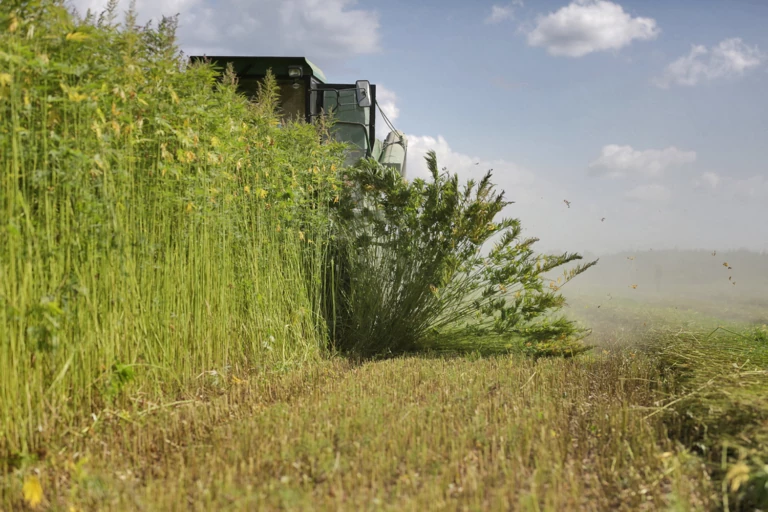
One row at a time, a specialized tractor harvests the tough fibrous stalk of hemp plants. The tractor blades flip the hemp and cut it down 5 inches off the ground. This creates a layer of air underneath that helps the hemp stock dry naturally. This is the first of many steps in the process to usable fiber. Photo: Lloyd Belcher
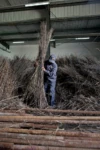
Dried and bundled, the stalks are cut and stripped of their outer shell—a process known as decortication. Photo: Lloyd Belcher
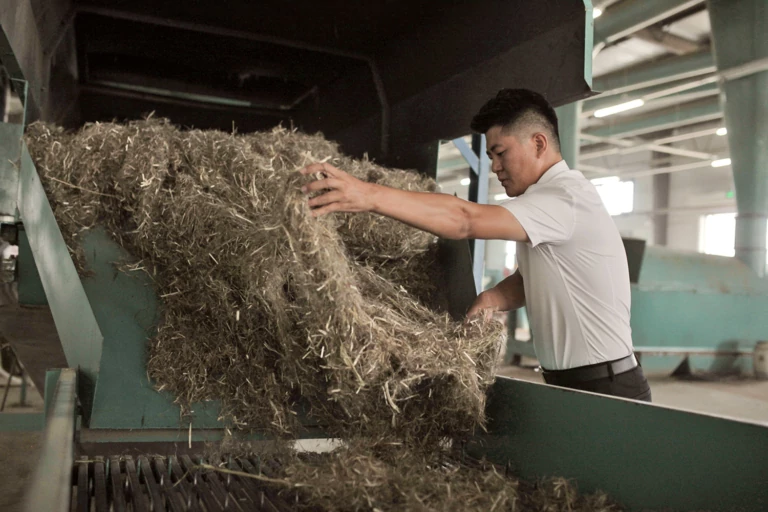
Hemp stalks are woody and hard to break down. Workers strip them into hairlike fibers and, not unlike in the 1850s, heckle the fiber through large combs or spears. Photo: Lloyd Belcher
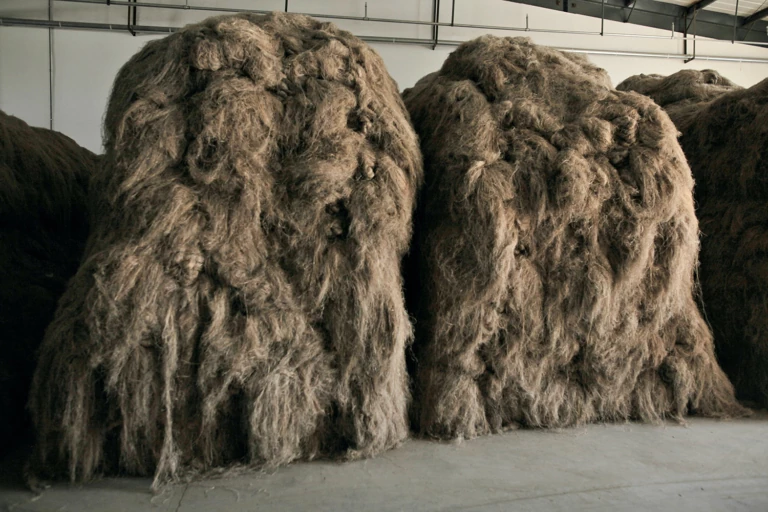
After stripping down the exterior fibers, the result is hair-like fibers. Farmers fling them around, tie them in the center and form bundles that look like wigs. They then grab each bundle by its knot, heave it around and throw it in a pile. The fibers now feel like bristled horse hair. Photo: Lloyd Belcher
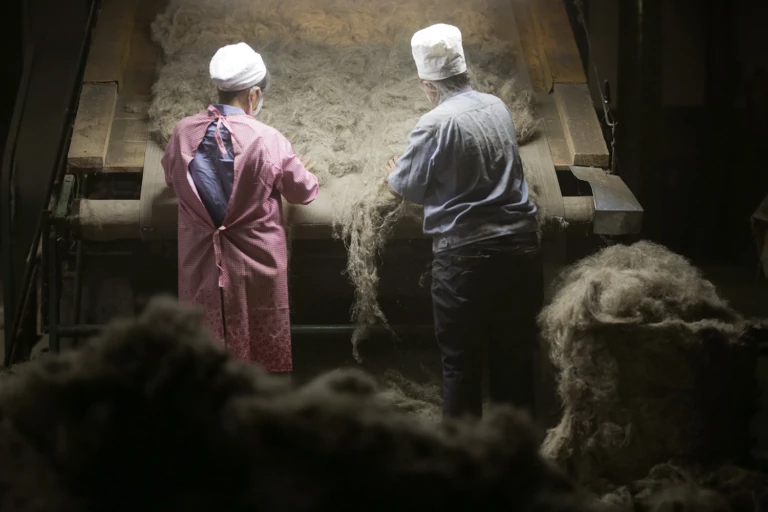
Next, at another facility, soaking, beating and washing the fibers results in a newly softened fiber that is left to dry on conveyor belts while workers pick out any last impurities. Photo: Lloyd Belcher
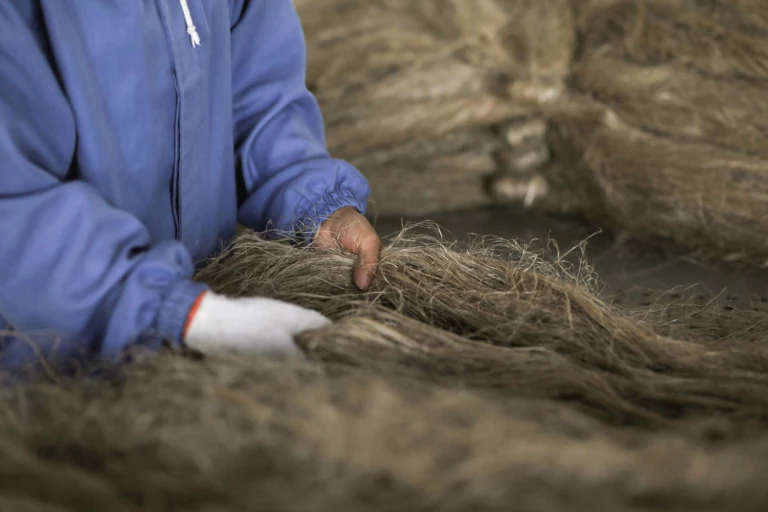
Once dried, workers compile the fiber strands, preparing them for another wash. Photo: Lloyd Belcher
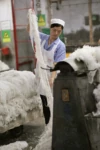
The fibers need to be washed several times until they soften. This worker is pulling apart strands of wet fiber, and then running them through a machine that helps further separate the strands . Photo: Lloyd Belcher
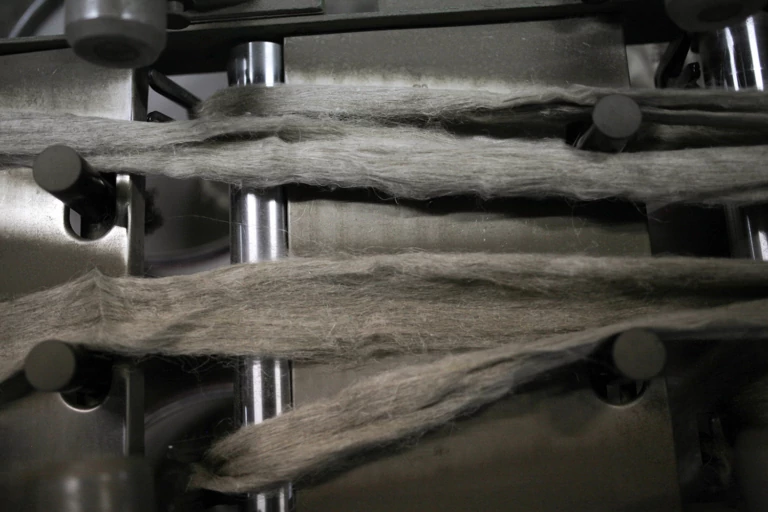
After a final wash, the dried fiber is spun through a machine that turns it into yarn. Photo: Lloyd Belcher
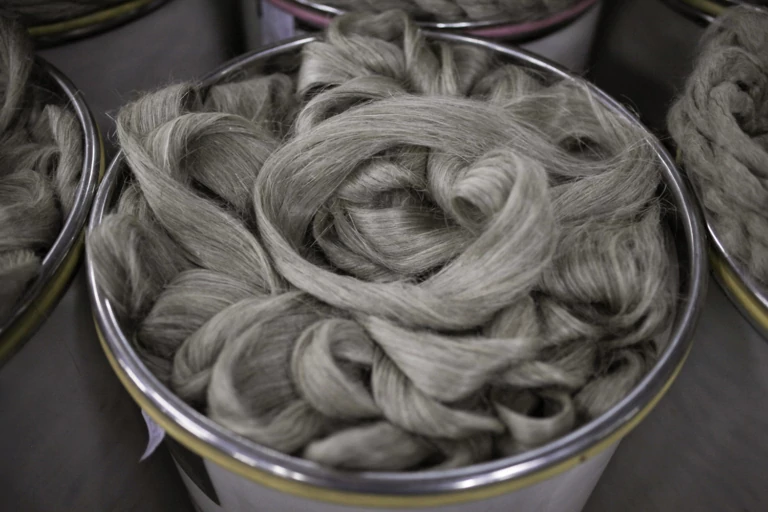
One by one, buckets fill up with strings of hemp yarn, now soft and supple enough to spin. Photo: Lloyd Belcher
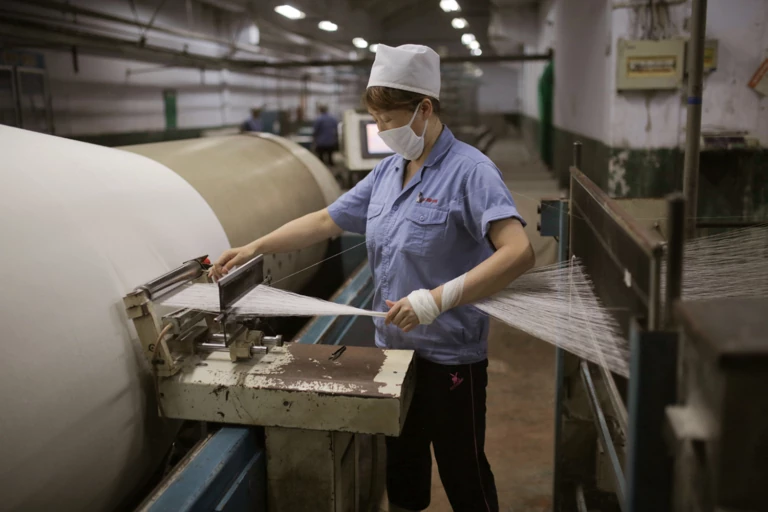
Massive looms spin the fiber into giant bolts of yarn that will feed into another loom for weaving fabric. Photo: Lloyd Belcher
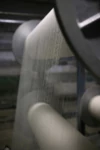
A spool of thread before it’s woven into a fabric. Photo: Lloyd Belcher
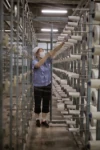
Smaller spools of processed hemp fiber now feed the giant loom to create bolts of yarn prior to weaving. Photo: Lloyd Belcher
Visit patagonia.com to see the entire hemp collection.
